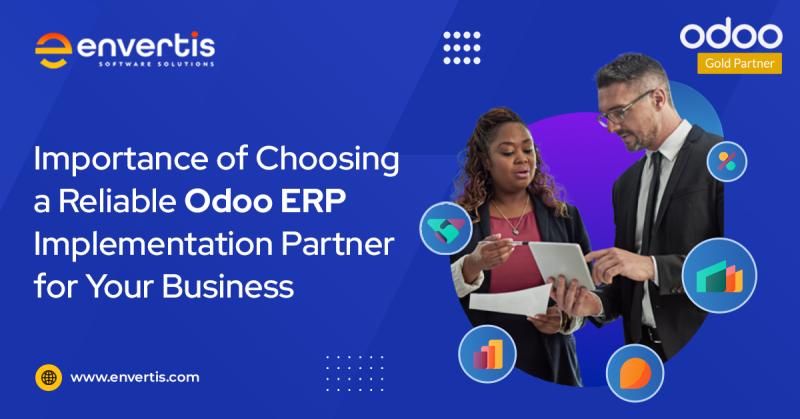Best Practices for Customising Odoo ERP to Fit Your Business Needs
Implementing an Enterprise Resource Planning (ERP) system like Odoo can significantly enhance your business operations. However, to truly leverage its full potential, it’s crucial to tailor it to your specific needs. Odoo ERP customisation allows you to modify the system to align with your unique business processes and workflows.
Here are some best practices to ensure effective customisation of Odoo ERP.
1. Understand Your Business Requirements
Before diving into Odoo ERP customisation, it's essential to have a thorough understanding of your business requirements. Conduct a detailed analysis of your current processes and identify areas that need improvement. This involves gathering input from various stakeholders to ensure that the customised solution addresses the needs of all departments. Clear documentation of these requirements will serve as a roadmap throughout the customisation process.
2. Leverage Odoo’s Modular Structure
One of the key strengths of Odoo is its modular architecture. This means you can start with the basic modules and add more as your business grows. When customising Odoo ERP, focus on modifying or adding only the necessary modules. This approach helps in keeping the system manageable and reduces the risk of over-complication. For instance, if your business needs a more sophisticated inventory management system, start by customising the Inventory module before moving on to others.
3. Engage with Odoo Community and Partners
The Odoo community is a valuable resource for anyone looking to customise their ERP system. Engaging with this community can provide insights, best practices, and even pre-built customisations that can save time and effort. Additionally, partnering with certified Odoo experts can be incredibly beneficial. These partners have the experience and technical know-how to ensure that your Odoo ERP customisation is both effective and efficient.
4. Prioritise User Experience
Customisations should always enhance the user experience. Complex interfaces and convoluted processes can lead to user frustration and decreased productivity. Aim for customisations that simplify workflows and make the system more intuitive. Conduct user testing with a small group of employees before rolling out the changes company-wide. Their feedback can help in refining the customisations to better meet user needs.
5. Maintain Flexibility for Future Changes
Business needs are dynamic and can change over time. It’s important that your Odoo ERP customisation allows for flexibility. Avoid hard-coding processes or creating overly rigid structures. Instead, opt for configurations that can be easily adjusted as your business evolves. This foresight will save time and resources in the long run by reducing the need for major overhauls.
6. Ensure Data Integrity and Security
Customising Odoo ERP often involves handling sensitive business data. It's crucial to implement robust data integrity and security measures during customisation. Regularly back up your data and ensure that customisations do not create vulnerabilities. Utilising Odoo’s built-in security features and following best practices for data protection will help in maintaining the integrity and security of your business information.
7. Implement a Testing and Deployment Strategy
Before deploying any customisations, rigorous testing is essential. Create a testing environment that mirrors your live system to identify any potential issues. This should include functional testing, performance testing, and security testing. Once the customisations pass these tests, plan a phased deployment. This gradual rollout can help in managing any unforeseen problems without disrupting business operations.
8. Provide Training and Support
After customising Odoo ERP, it’s vital to provide comprehensive training to your staff. Ensure they understand the new features and how to use them effectively. Continuous support should also be available to address any issues or questions that arise post-deployment. Well-informed and confident users are crucial for the successful adoption of the customised ERP system.
Customising Odoo ERP to fit your business needs can significantly improve efficiency and productivity. By following these best practices—understanding your requirements, leveraging the modular structure, engaging with the Odoo community, prioritising user experience, maintaining flexibility, ensuring data integrity, implementing a robust testing strategy, and providing adequate training—you can ensure that your Odoo ERP customisation is both effective and sustainable.




Comments